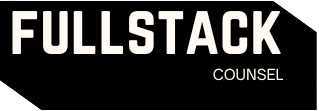“Nike” brand is currently valued at more than $33 Billion. You can create a powerful brand like Nike if you know how to put safety walls around your brand.
Trademark is the intellectual property that protects a company’s brand. Unfortunately, not all trademarks are created equal. Some marks like Nike and Apple enjoy maximum protection under the law and some marks cannot even be registered.
Why is Nike a strong trademark? What are the benefits of a strong trademark? And how do we create a strong trademark?
I’ll help you answer all these questions in this post. Instead of wasting thousands of dollars and several years developing a weak trademark, start building a powerful brand from day 1 with a strong trademark.
Let’s get started.
What is a Strong Trademark?
A trademark is any word, phrase, symbol, design, or combination of these things that identifies your goods or services. Your company’s name, product’s name, service’s name, logos, and brand names may function as trademarks. Even colors, scents, and sounds may be trademarked, as long as it distinctively identifies the source of goods or services.
A strong trademark is a mark that is highly distinctive, which helps consumers immediately pinpoint the source of the products and services. A weak trademark, to the contrary, is a mark that does a poor job in distinguishing the source of the products and services. Generally, the stronger a trademark, the easier it is to register the mark and enjoy exclusive use of the trademark to build powerful brands.
Benefits of a Strong Trademark
First of all, you’ll get competitive advantage because consumers will immediately identify your products and services. The inherently distinctive feature of a strong trademark will distinguish your mark in the overcrowded market full of similar brands.
Also, you’ll enjoy exclusive use of your mark. You can register your trademark with the USPTO and exclude others from using the same trademark. If someone uses your trademark without your permission, you can sue that person (or company) under the Lanham Act for trademark infringement and make handsome money covering:
- actual damages,
- disgorgement of the Infringer’s profits, and
- attorney’s fees and costs.
Additionally, you can quickly scale your business by utilizing your trademark. For instance, you can create a franchise empire like Taco Bell and Planet Fitness. Or you can instantly expand branches of your products by licensing out your trademark, an all-time favorite IP strategy in the fashion industry.
The Hierarchy of Trademarks
To create a powerful trademark, create a mark that falls on the stronger side of the hierarchy of trademarks.
- Fanciful marks (Strongest)
- Arbitrary marks
- Suggestive marks
- Descriptive marks (May not be registrable)
- Generic marks (Weakest, CANNOT be registered)
Fanciful Marks
A fanciful mark is a made-up word. It consists of a combination of letters that has no real life definition or any inherent meaning. You may need bigger advertising efforts to associate your products or services with the trademark, but fanciful marks enjoy the broadest protection against third party uses.
Ex: Google, Rolex, Kodak
Arbitrary Marks
An arbitrary mark is composed of a word or words that have a common meaning or definition; which meanings are unrelated to the goods or services. For instance, using Apple for computers (not apples) and Square for commerce solutions are arbitrary uses. Arbitrary marks are highly distinctive marks that enjoy broad protection like fanciful marks.
Ex: Apple, Square, Nike
Suggestive Marks
Suggestive marks suggests the quality or nature of a product or service or its attributes without actually describing the product or service. Compared to fanciful marks and arbitrary marks, suggestive marks need less education of the public. Generally, suggestive marks are entitled to meaningful but less extensive trademark protection.
Ex: Airbus, Netflix, Facebook
Descriptive Marks
Descriptive marks describe the nature of goods or services. Descriptive marks can only be protected if you possess proof of a supplementary, distinctive secondary meaning that results from the public’s recognition of the mark with your goods or services.
Merely descriptive words, such as “Cold and Creamy” for ice cream will not be protected.
Ex: U.S. News, Best Buy, Holiday Inn, Sharp
Generic Marks
A generic word is what the public understands to be the common name of the product or service. Generic words or phrases are not registrable. An example of a generic mark is using “Apple” to sell apples. Using a generic word as a source identifier creates a generic mark, which will not be granted with trademark protection.
Ex: Bicycle (for bicycles), Computer (for computers), Car (for cars)
Caution: a trademark that was not originally generic can become generic if a majority of consumers in the public consider it the name of the product. Examples of originally valid trademarks that became generic, and thus no longer protected, are Aspirin and Band-aid.
What If I have a Weak Trademark?
You can still use your trademark. However, because anyone can also use the same mark, you should consider adopting a stronger mark now to save time and money if you want to build a strong, enforceable, and valuable brand.
Conclusion
Choose a strong trademark when you start building your brand. A strong trademark is a highly distinctive mark such as fanciful marks, arbitrary marks, and suggestive marks. You should stay away from generic marks because they cannot be registered, which means you cannot deter someone else from using the same mark as yours.

